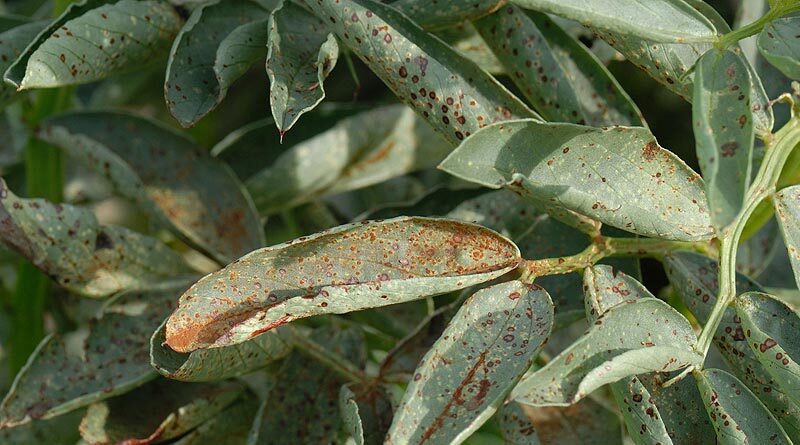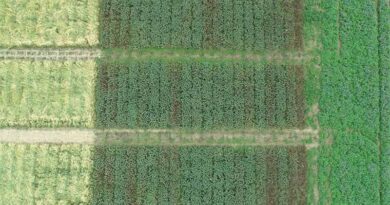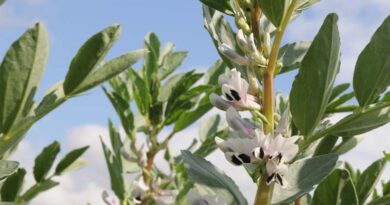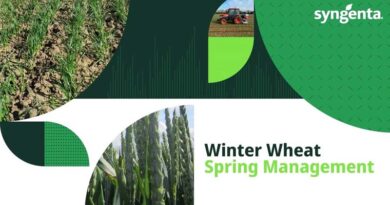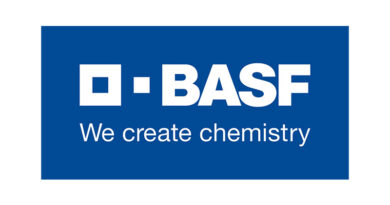Bean cover for all seasons
01 December 2021, UK: With the area and value of pulse crops set to increase this season, growers can make the best of bean yields with new Elatus Era programmes to effectively tackle the spectrum of disease issues.
More variable weather conditions through late spring and early summer are increasingly likely to see crops face pressure from both rust and chocolate spot during the same season, warns Syngenta Technical Manager, Michael Tait.
Hot days and humid nights had made rust the predominant issue for field beans in recent years. But where conditions are cooler and wetter, chocolate spot becomes the more prevalent pathogen. Both diseases can frequently occur together (below).
And, as experienced last season, it is becoming increasingly common to see prolonged periods of high pressure from one disease, suddenly switch to conditions highly conducive to the other.
“Results from last season’s trials by PGRO and other research has shown Elatus Era programmes can offer the strongest available protection from rust, along with its highly effective results on chocolate spot to cover all the main disease risks for growers,” he advised.
Positive results
Winter bean trials at Stubton, in Lincolnshire, showed Elatus Era followed by Amistar at the T1 and T2 timings, controlled rust to as low as 0.25% of the leaf area at the end of July, when the untreated plots were completely defoliated by infection, reported Michael (below).
At the same time, the treatment maintained 60% control of chocolate spot, compared to the untreated – holding damaging infection to just 2.5% of the leaf area. Yields of 5.37 t/ha and thousand grain weight were highest with the full rate of Elatus Era, followed by Amistar.
“Research highlights Elatus Era is most effective as a preventative application, to target disease before it gets into the leaf or becomes established in the plant,” Michael advised.
“Particularly with rust that can develop so quickly.”
Trials have shown the product is best used as the first application in a two-spray programme, typically followed by Amistar, he advocated.
Research trials by PGRO have also shown the useful beneficial effects of Elatus Era in reduction of both ascochyta and Stemphylium.
Over winter risk
With this autumn’s warm soil temperatures, winter bean crops sown early, or that have grown strongly in milder winter conditions, will be more susceptible to chocolate spot in the summer, warned Michael.
“Last winter, agronomists reported chocolate spot had already been seen in over wintered bean crops in late January,” he pointed.
PGRO trials had indicated optimum first fungicide spray timing at mid-flowering, followed by a second treatment three to four weeks later, at full canopy.
Growers and agronomists who used Elatus Era on the product’s approval at the end of last season, reported good levels of disease control and green leaf retention in challenging conditions.
Picture perfect
Field bean disease trials in the eastern counties last season have shown a step change advance in control with the new Syngenta Elatus Era fungicide treatment.
Replicated plot research at the Rougham Innovation Centre, in Suffolk, has shown a significant increase in control with the new treatment programmes reported the site’s Syngenta Business Manager, Mike Welby.
“Disease pressure had been incredibly high, with early rust infection during the dry period, followed by chocolate spot as conditions turned wetter and more humid,” he reported.
“Untreated plots were decimated with almost total leaf loss, whilst all the Elatus Era treated plots stood out as remaining green and largely free from disease for far longer.
“There has been a clear beneficial response from higher rates of application, along with the timing of application and the options selected for follow up treatments,” he advised.

